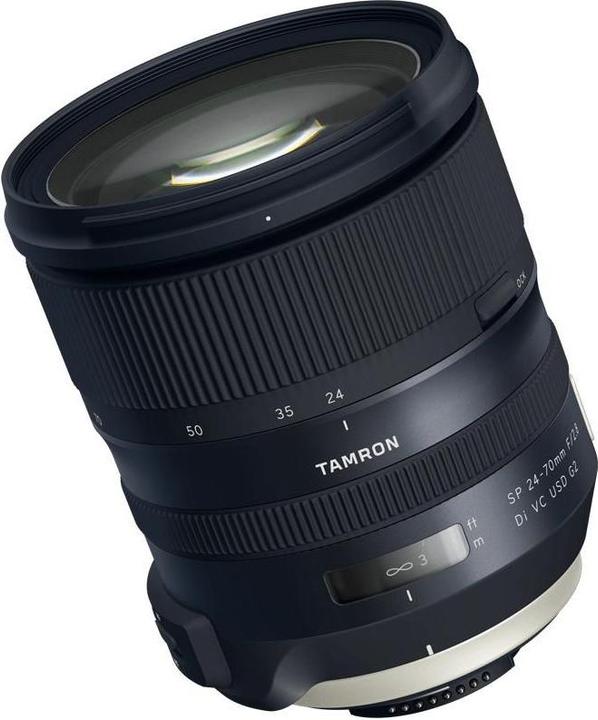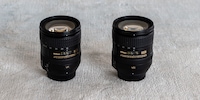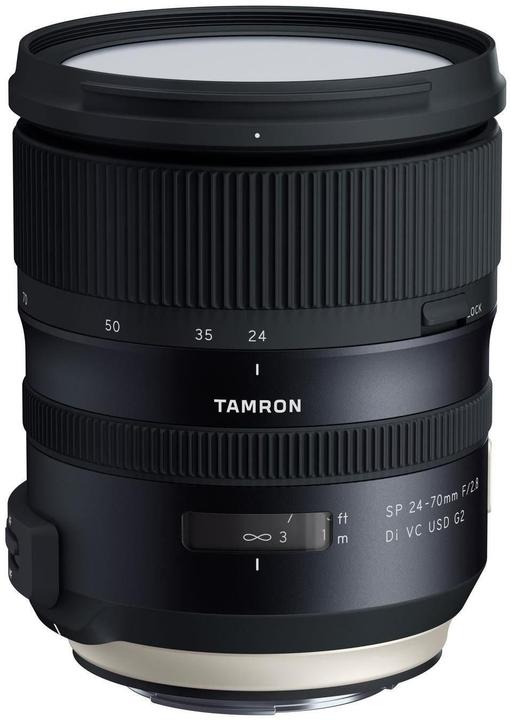

Tamron SP 24-70mm f/2.8 Di VC USD G2 tested: lots of light, lots of weight
With many lenses - especially inexpensive ones - the aperture decreases when you increase the focal length. This is different with the Tamron SP 24-70mm. Regardless of the focal length, the maximum aperture remains unchanged. However, you will have to dig deeper into your pocket for this.
Tamron produces the SP 24-70mm f/2.8 Di VC USD G2 for SLR cameras from Canon and Nikon. I tried out the version with EF bayonet for Canon models. Over the last few weeks, we have used the lens in the editorial team on the Canon EOS 90D for both photos and videos.
Handling
Weighing in at 905 grams, the Tamron SP 24-70mm is heavier than many standard or travel lenses that you often get in kits with SLR or system cameras. Due to the cancellation of the MWC, I have not yet been able to try out the lens at a trade fair. However, I don't want to wait until after IFA in late summer to test it. However, even the short distances I cover in the office with the lens on the camera in my hand lead me to believe that, regardless of the image quality, I won't be satisfied with the weight of the lens after a few days at the trade fair.
With a length of 11.1 centimetres and a diameter of 8.84 centimetres, the Tamron SP 24-70mm f/2.8 has a large volume. This helps with image quality, but makes the lens a bulky companion. You can't take it with you on a family holiday. You should plan a camera backpack as a means of transport.
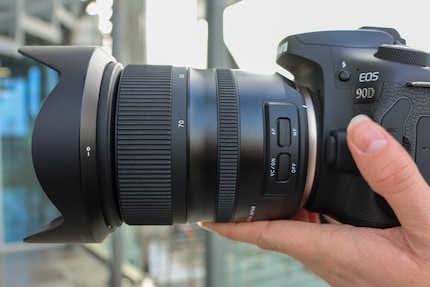
Despite its size, I can reach all the lens controls with my left hand without any problems. Specifically, there are two switches with which I can switch between manual and autofocus, as well as switch the image stabilisation on and off. There is also the focus ring and the rotating ring for the focal length. The latter can be fixed at 24 millimetres so that the lens does not pull apart on its own when not in use. You can achieve this fixation with your right hand and have to let go of the camera briefly. However, this is not a problem, as you will often have your left hand on the lens and can "carry" the camera with it without hesitation. With other focal lengths, you cannot hold the lens in place. That would also make sense, but so far the focal length doesn't slip when I shoot downwards with the camera, for example.
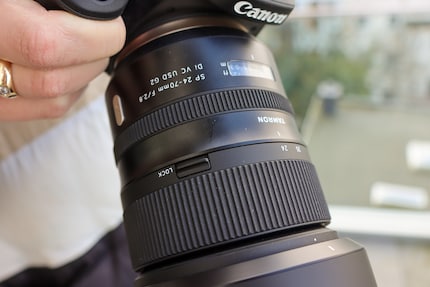
Image quality: details and more
The Tamron SP 24-70mm is compatible with full-frame, APS-C and DX sensors, according to the manufacturer. For cameras with DX and APS-C sensors, such as our EOS 90D, the focal length is extended to 38.4-112 millimetres due to the crop factor. The manufacturer classifies it as a wide-angle to normal lens. The closest focusing distance is 38 centimetres. This is just about right when I hold a smartphone in my hand to take photos.
The aperture of the SP 24-70mm is f/2.8 throughout, which has the advantage that the exposure settings do not necessarily change when zooming. With other lenses, this happens because the maximum aperture becomes smaller as the focal length increases. In contrast, the Tamron can always receive the same amount of light.
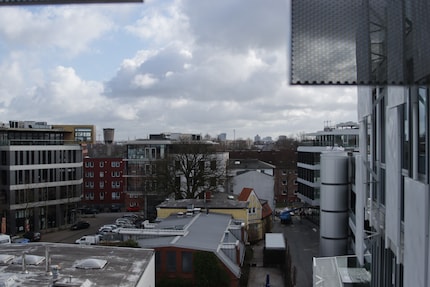

Yes, the motif is not the most beautiful, but nevertheless the view from the office window shows the range of possible image sections.

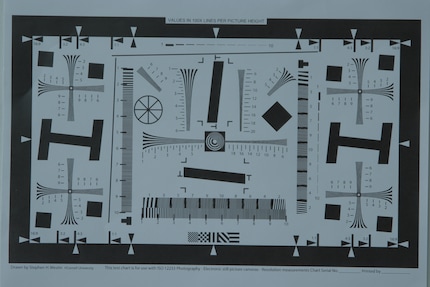
This test chart is about recognising how well the lens copes with small objects, fine lines and other things. The first thing you notice, however, is that there is a clear wide-angle distortion at a focal length of 24 millimetres, which can be recognised by the curved lines at the edge of the image. Directory correction is not possible in the camera settings. The lens is recognised correctly and you can switch on a vignetting correction, for example, but you would have to take care of the distortion later when editing the image. Lightroom is not yet able to do this automatically. The programme only offers me the correction of a different lens for the image. Manual correction with just a few more clicks produces good results.
When I tried to photograph the test chart, the autofocus showed problems that otherwise did not occur. It worked perfectly at 24 millimetres, but failed to produce a sharp image at 70 millimetres. I therefore had to focus manually and am not completely convinced by the result when viewed in its original size. Nevertheless, the images of the test samples show that the lens in combination with the EOS 90D cannot be confused by even the smallest differences and very closely spaced stripes.
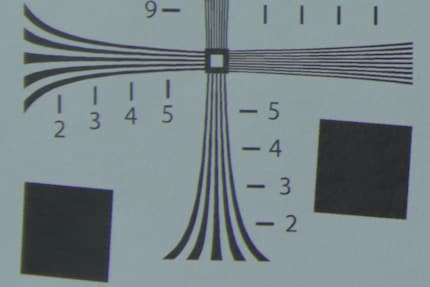

If these excerpts from the test chart images are not enough for you, you can find the test images in full resolution here.
Slight colour changes at the edges of black areas, so-called chromatic aberrations, occur more strongly towards the edge of the image at a focal length of 24 millimetres. They are not recognisable at a focal length of 70 millimetres.
According to Tamron, the image stabilisation of the SP 24-70mm holds up to five f-stops. This should ensure fewer blurred images when shooting freehand in low light conditions. I took freehand shots during the test and tried to see the effects of the image stabilisation and I imagine I saw positive effects. However, I was unable to reproduce them in such a way that they could be proven and demonstrated. I don't have the technical equipment to really subject the camera and lens to exactly the same movements with and without image stabilisation. However, as the aperture is always wide open at f/2.8 and does not become smaller as with other lenses, image stabilisation is less important with the Tamron lens than with other models.
Conclusion: lots of light, lots of weight
Qualitatively, I am very satisfied with the Tamron SP 24-70mm f/2.8 Di VC USD G2. The images have a high level of detail and the distortions in the wide angle are not so great that they would make the images unusable. I mainly use the high speed, even in the telephoto range, for videos. It is also helpful for photos, but depending on the subject, I have also reduced the aperture so that the background does not become a completely mushy surface. On the other hand, the large amount of light captured ensures exposure times that are hand-held, even in poor lighting conditions.
When I was but a young student, I'd sit in my friend's living room with all my classmates and play on his SuperNES. Since then I've had the opportunity to test out all the newest technology for you. I've done reviews at Curved, Computer Bild and Netzwelt, and have now arrived at Galaxus.de.
